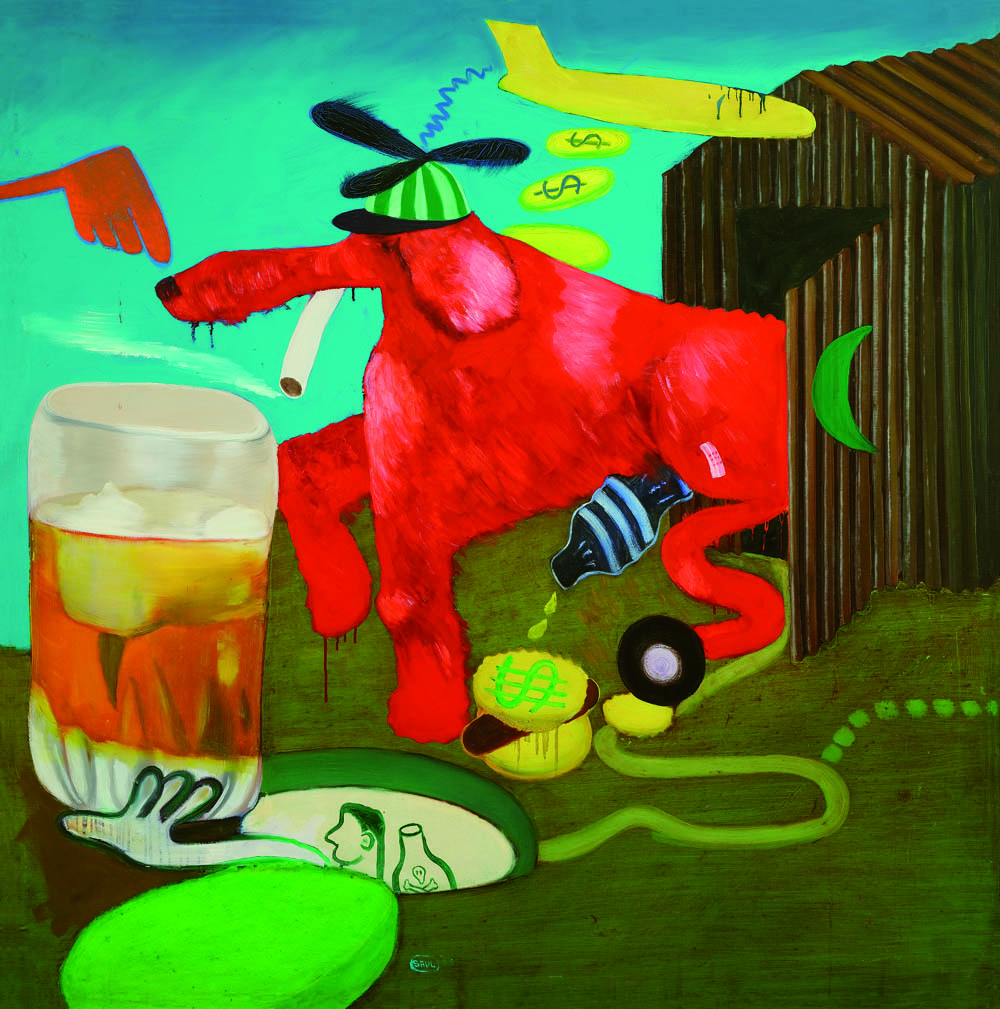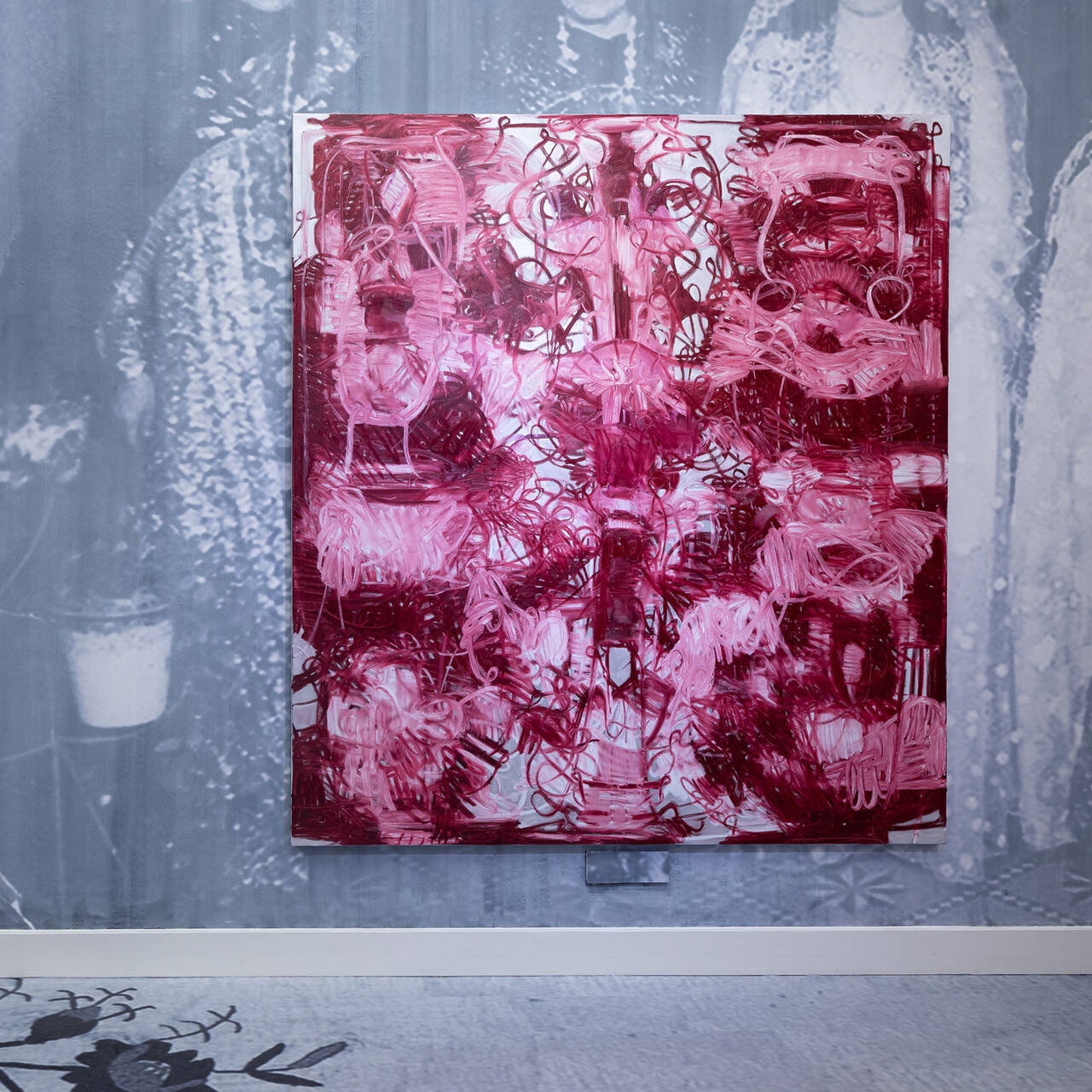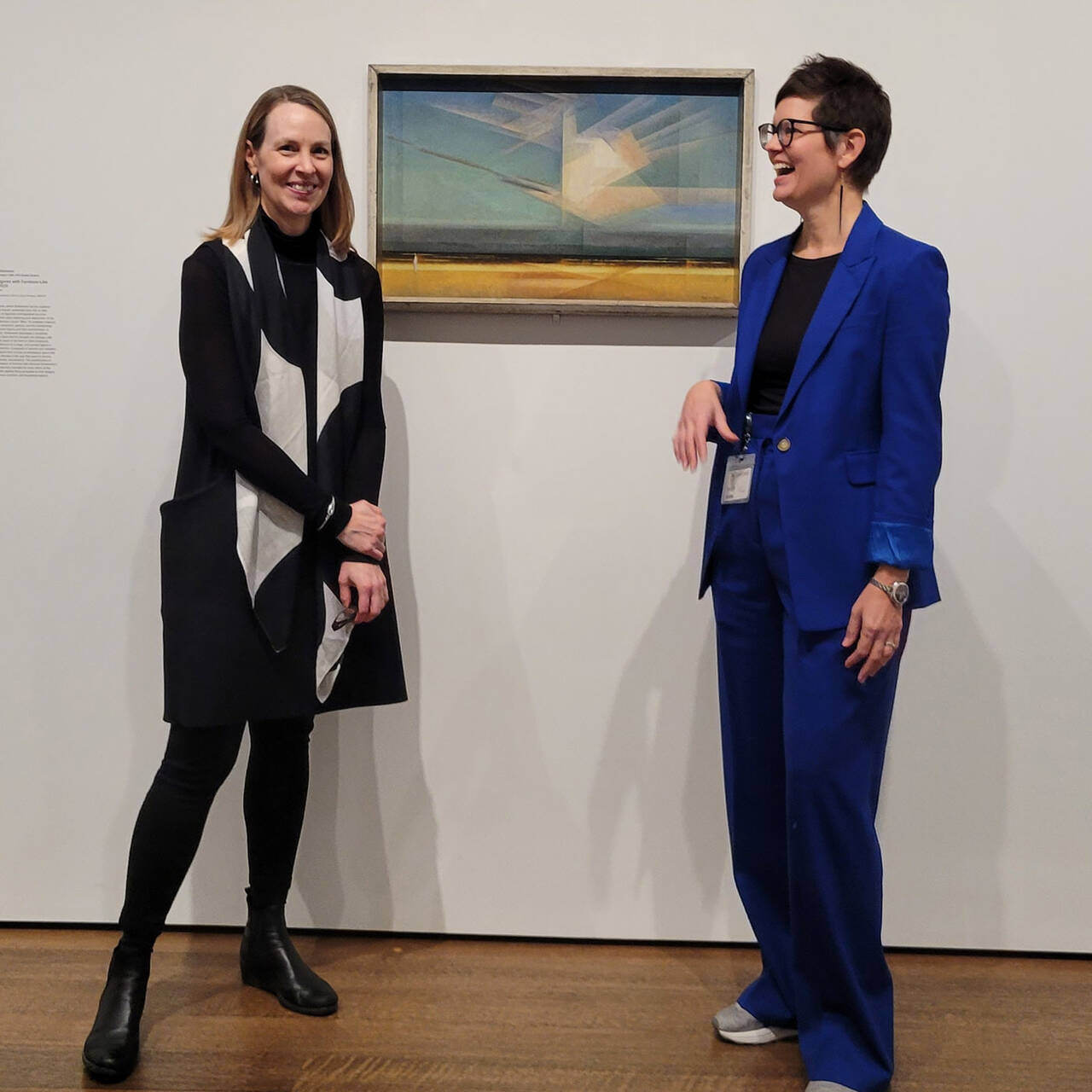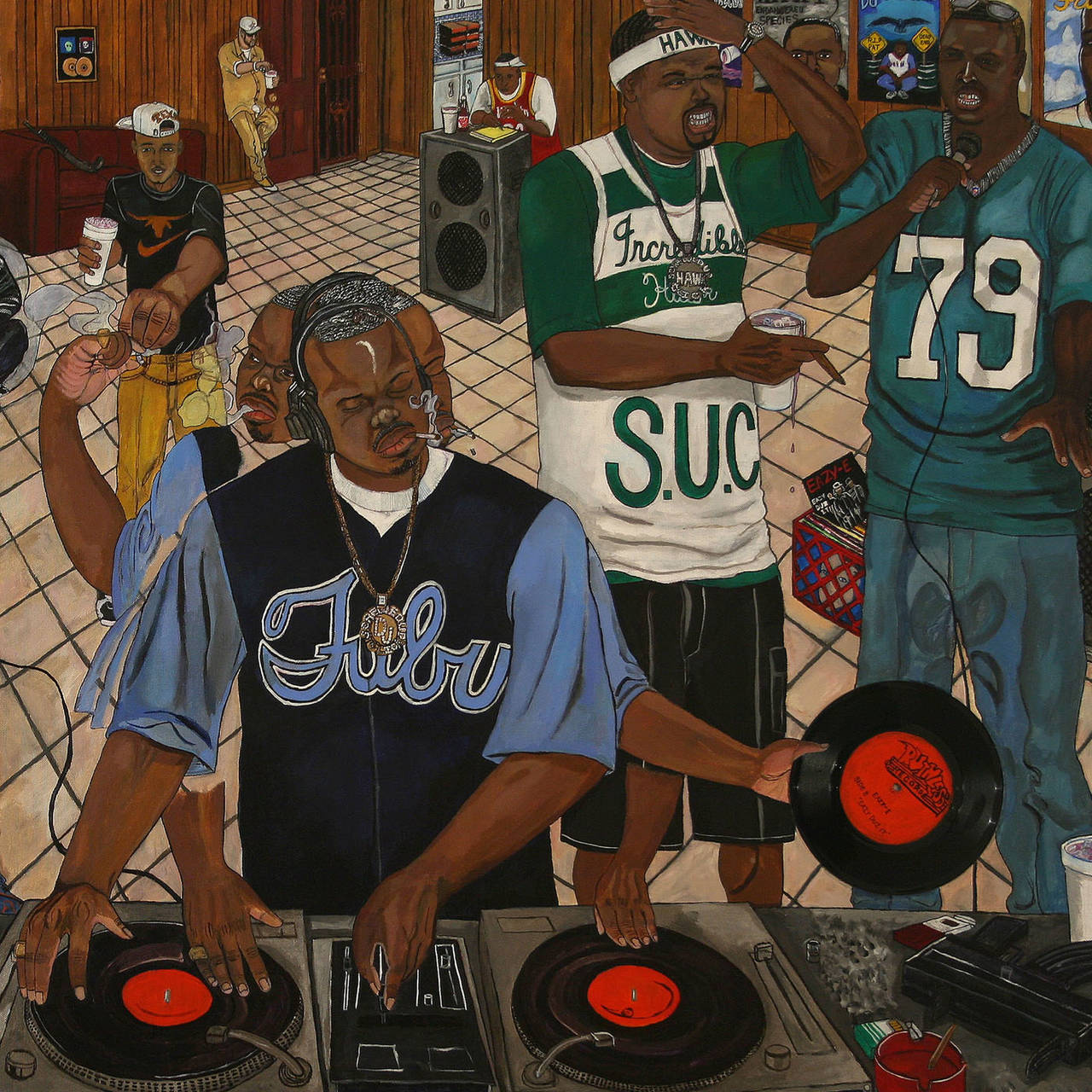Every generation critically addresses their predecessors: In the 1960s, it was Funk Art in California that reacted to Abstract Expressionism and inspired Peter Saul.
By banning the figurative element from painting in favor of an abstract analysis of the “crisis of modern man” and also resorting to images from archaic cultures, artists such as Jackson Pollock, Mark Rothko or Willem de Kooning shaped the Abstract Expressionist movement in the 1940s and 1950s. They saw art as providing an opportunity to criticize progress and an answer to race riots, totalitarian regimes and the effects of the war.

Viola Frey, Man Kicking World II, Cameron Art Museum in Wilmington, North Carolina, Image via flickr.com
The tide turned when in the late 1950s the “Bay Area Figurative Movement” began to form in San Francisco from the ranks of the Abstract Expressionists: an increasing number of artists now criticized the non-figurative nature of Abstract Expressionism and revisited figuration. The candid and experimental scene around the late Beatniks and early hippies in California also provided fertile creative ground, from which so-called “Funk Art” was later to arise.
Humorous and vulgar
In contrast to their socio-critical precursors, the Funk Art artists, and they included Wally Hedrick, Jay DeFeo, Viola Frey and Bruce Conner, did not focus on the surrounding world in their art work, but instead on their own sensitivities. They did not regard themselves as being a fixed group and rejected all shared definitions of their art – but what all of their approaches had in common was the passion, the playfulness and the scurrility of their works, which could be described using the term “funky”, coined in the Jazz scene in the 1920s. They allowed their emotions and psychological processes to become part of their work in revealing ways, often paired with a lot of humor, irony and at times vulgar depictions of sexuality.

Bruce Conner, SNORE, 1960, Image via Fine Arts Museums of San Francisco
Funk Art did not conform to the stylistic and aesthetic demands made of art at that time in the least: The assemblages and installations were much to chaotic to be Minimalist, too figurative for Abstract Expressionism, and the biographical features of the sculptures too obvious and too personal to be taken seriously. As regards their critique of consumer culture, references to Pop Art are evident, but many of the works seem clumsy – which may be one of the reasons why Funk Art was known almost exclusively in the Bay Area and now appears as little more than a footnote in 20th century art history.
Society in the pillory
Yet this did not bother the artists themselves. In the late 1950s, Bruce Connor, one of the first “Funk Artists,” collected finds from modern throwaway culture and with his assemblages made of consumer waste indirectly castigated a society that celebrated consumerism and waged wars instead of fighting for a peaceful life together. Edward Kienholz – who hovered between Funk Art and Pop Art – also made recourse to this method in creating his “objets trouvés,” with which he drew attention to discrimination and double standards in society.

Mowry Baden, Delivery Suite, 1965, Image via mowrybaden.com
Viola Frey’s larger-than-life sculptures in turn raise issues of gender-stereotyping, something that the renowned ceramicist had to experience personally; and after having worked on it for ten years, Jay DeFreo created a painting that weighed over a ton and had to be lifted from his flat with a crane with “The Rose”. Peter Saul, who had previously lived in Europe for a while, settled in the Bay Area in 1964 and painted ironic-kitschy works on the Vietnam War as well as overly stylized portraits of politicians in bright colors.
The installations and assemblages of the “Funk Artists”were often geared towards including the viewers, allowing them to smell the odor of decay and criticism and experience it firsthand – an interactivity that had not previously existed in the art world in quite this way. And as adverse as they were to being lumped together: The “Funk Art” artists all provided a playful-ironic questioning of the definitions of art prevalent at the time.


5 questions for Mary Messhausen and proddy produzentin
With the performance "Thonk piece: Hungry for Stains", drag queens Mary Messhausen and proddy produzentin will open the exhibition COSIMA VON BONIN....

HIP HOP IS BLACK CULTURE – NOT THE OTHER WAY AROUND
Hip hop’s 50th birthday is an occasion for us to listen to some old records and mixed tapes and to look back at the most important hip hop films of...

Now at the SCHIRN:COSIMA VON BONIN
The SCHIRN is showing a unique presentation of new and well-known works by COSIMA VON BONIN until June 9.

You Get the Picture: On Movement and Substitution in the Work of Lena Henke
The artist LENA HENKE already exhibited in the SCHIRN Rotunda in 2017. What are the secrets of her practice and where can you find her art today?

SHALLOW LAKES – plumbing the depths
In the SCHIRN’s rotunda, MELIKE KARA is presenting a series of sculptures that are reminiscent of bodies of water or small lakes. So, what’s this...

When subculture becomes mainstream – a balancing act
Regardless of whether it is hip hop, techno, or the queer scene: It is not unusual for the aesthetics of countercultures and subcultures to morph into...

Now at the SCHIRN: THE CULTURE: HIP HOP AND CONTEMPORARY ART IN THE 21ST CENTURY
Coinciding with the 50th anniversary of the birth of hip hop, the SCHIRN dedicates a major interdisciplinary exhibition to hip hop’s profound...

Julia Feininger – Artist, Caricaturist, and Manager
Art historians can tell us a lot about LYONEL FEININGER, but who was Julia Feininger and what legacy did she bequeath to the world of art?

Lyonel Feininger and the Harvard Art Museums. Part 2
The Harvard Art Museums host the largest Lyonel Feininger collection in the world. The directors Lynette Roth and Laura Muir chat about Feininger’s...

Five good reasons to view Melike Kara in the SCHIRN
From February 15, the SCHIRN presents a new site-specific installation by Melike Kara in its public rotunda. Here are five good reasons why it's worth...

Lyonel Feininger and the Harvard Art Museums. Part 1
The Harvard Art Museums host the largest Lyonel Feininger collection in the world. How did that happen and how was the relationship between the artist...

2024 AT THE SCHIRN
This is 2024 at the SCHIRN! From hip-hop and art in the 21st century, to Selma Selman, the self-proclaimed "most dangerous artist in the world", to...